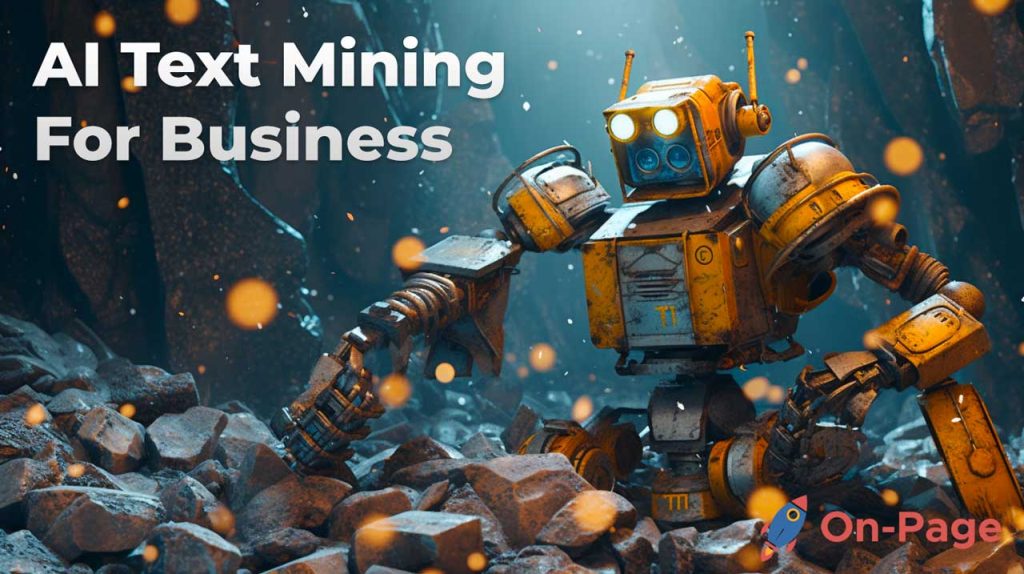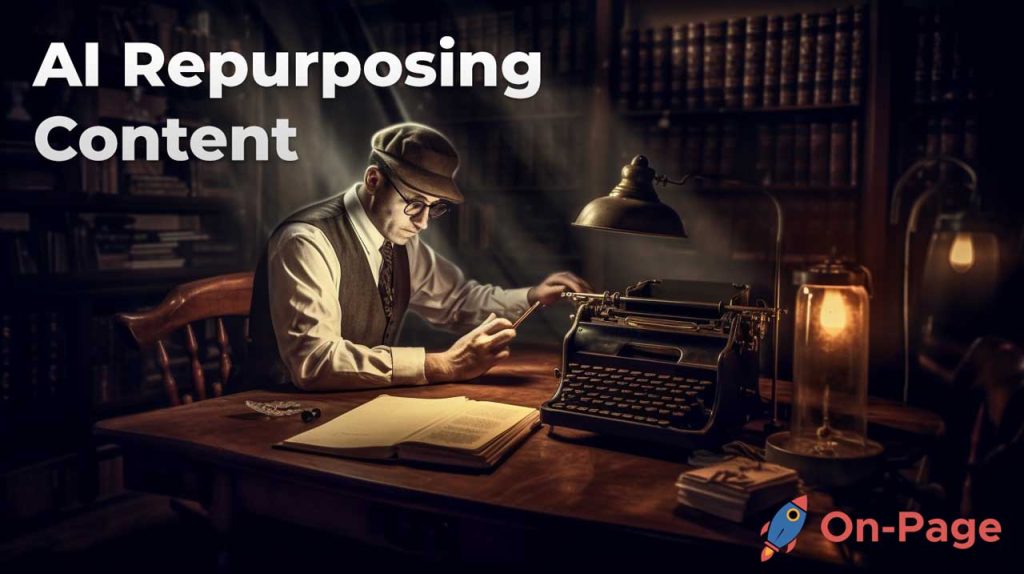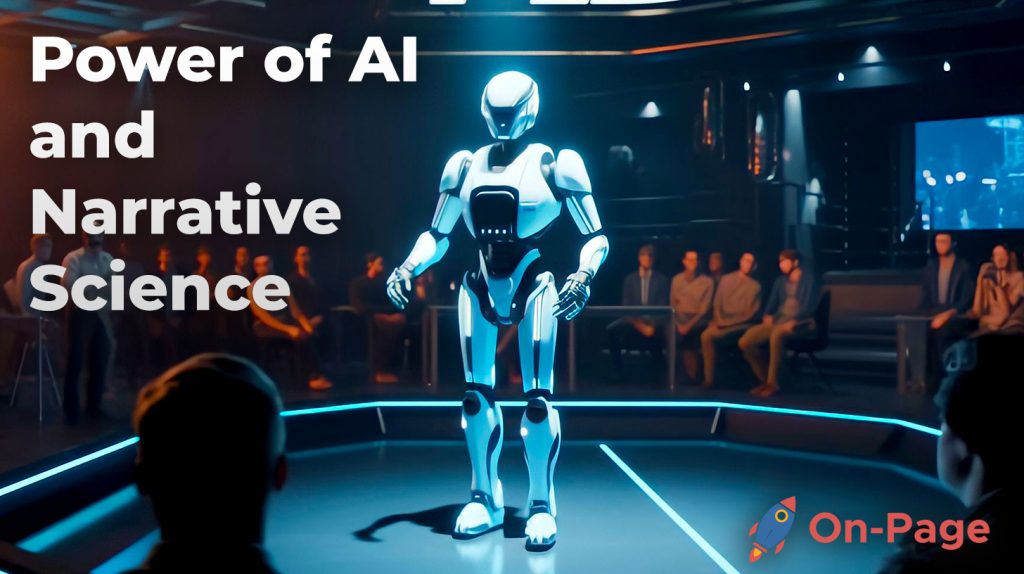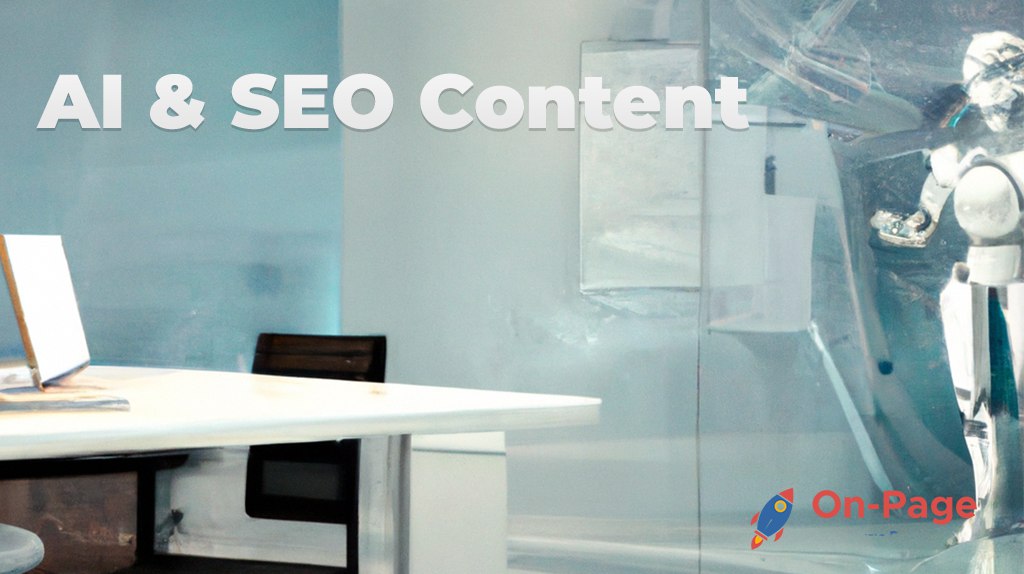Imagine a world where the complexity and nuance of your favorite literary texts are dissected, analyzed, and appreciated by an unerring AI-powered companion that never needs a bookmark. Welcome to 2023, where artificial intelligence (AI) has stretched its wings into the realm of literary analysis, offering insights so profound they were once reserved for the most dedicated human scholars.
In this blog post, we take a thrilling voyage together to explore the limitless potential AI holds in unveiling layers of meaning hidden within written masterpieces. Get ready to embark on a modern-day odyssey — one where humans and AI join forces to appreciate literature in ways you never dreamed possible.

AI and natural language processing (NLP) have the potential to transform the field of literary analysis. They can be used to process vast amounts of text, identify patterns and trends, analyze recurring themes and stylistic devices, and even help diagnose authorship. While there are limitations to what AI can capture regarding the subtleties of human language, its capabilities allow researchers to analyze literature at a scale never before possible.
AI in Literary Analysis: Techniques and Applications
The rapid advancements in artificial intelligence have opened new possibilities in the analysis of literature. The processing power and efficiency of AI algorithms enable researchers to analyze individual works, entire movements, and historical periods, identifying patterns and trends that would otherwise go unnoticed. AI can detect recurring themes, motifs, and stylistic devices across a vast range of texts, providing a more comprehensive understanding of the literary landscape.
For instance, a study by researchers at Stanford University used machine learning to analyze over 112,000 novels from Project Gutenberg’s digital library. Through clustering analysis, they identified six different story arcs that are prevalent in fiction across different genres and cultures. This suggests that despite cultural and linguistic differences, there are universal storytelling patterns in human narratives.
This ability of AI to identify patterns is akin to the way a music streaming service creates personalized playlists for its users by analyzing their listening habits and preferences. In the same way that Spotify suggests songs based on previous choices, AI can recommend books based on a reader’s past interests by analyzing stylistic, thematic, or narrative similarities between works.
However, some argue that relying too much on machine learning could lead to an oversimplification of complex literary analysis. Compared to traditional modes of analysis that emphasize close reading and interpretation, machines lack the nuance or interpretative depth needed to understand literature fully. It is easy for machines to label texts within fixed categories or locate recurring themes diminishing the complexity of writing.
Nonetheless, there is something significant about literature as a means of communication that machines may not understand precisely: the deliberate use of language-based ambiguity used by authors as metaphorical expressions.
Identifying Patterns and Themes
AI algorithms can be useful in locating patterns and themes both within individual works and across larger data sets. Thematic analysis is a research methodology that involves identifying patterns of meaning within text data. This is an approach that can be particularly useful for uncovering themes in literary works.

For instance, researchers at Stanford University trained a neural network to generate original poetry using machine learning. By training their model on thousands of poems from different periods, they were able to create convincing pieces of verse that mimic the style and tone of various poets. The system was so successful that it could even assimilate elements of different poets’ styles into one cohesive piece.
In another example, research conducted at the University of California San Diego used natural language processing to identify the top themes present in Shakespeare’s Hamlet. They analyzed over 26,000 lines of text and categorized words based on their frequency in the play. They found recurring themes such as love, death, revenge, and power dynamics in relationships.
However, some scholars argue that while it is possible to identify recurring motifs or even develop thematic frameworks to categorize literature systematically when analyzing texts through algorithms, writing is more than about the identification of content from textual analysis like themes or frequent word choices. Instead, authors use language as an art form that AI may fail to capture fully.
AI’s algorithmic identification capability relating to linguistic patterns is similar to how Google Maps estimates traffic flow based on previous GPS data sequences. Learning from past experiences and applying them to real-time scenarios highlight how the technique continually refines its predictions by incorporating more data sequences.
Authorship Attribution and Stylometry
One of the most intriguing applications of AI in literary analysis is authorship attribution and stylometry. Traditional methods used by literary scholars to determine authorship often rely on subjective factors such as handwriting analysis or personal knowledge about an author’s life, which can lead to inaccuracies and biases.
However, AI algorithms can analyze large amounts of text data to identify patterns and features unique to each author’s writing style. One example of this is the use of n-grams, which are sequences of words that appear together in a text. By analyzing the frequency and distribution of specific n-grams in a text, AI algorithms can identify an author’s characteristic writing style with a high degree of accuracy.
Stylometric analysis can also be used to detect literary forgeries or misattributions. By comparing the linguistic patterns and stylistic features of a disputed text to known works by various authors, AI algorithms can determine whether the disputed text is more likely to have been written by one author or another, or whether it may be a new discovery altogether.
Stylistic features derived through AI-generated n-grams and other techniques can be used not only to determine authorship but also for critical purposes. It is possible not only to test hypotheses about the emergence or alteration of particular styles over time but also to provide new insights into broader trends in the development of literature.
For instance, researchers at the University of Santiago de Compostela used stylometric analysis to prove that two previously anonymous 16th-century Spanish novels were actually written by Miguel de Cervantes, the famous author of Don Quixote. It’s a discovery that would have taken years using traditional literary analysis methods.
While some critics argue that AI-led stylometric analyses undermine the human role in literary analysis and interpretation, proponents point out that such analyses expand our understanding of literature by providing objective evidence for subjective opinions.
- A 2019 study conducted by researchers at the University of Illinois revealed that AI algorithms could identify various linguistic patterns and stylometric features with an accuracy rate of up to 82%.
- According to a 2020 report published in Nature Communications, implementing AI techniques into literary analysis has led to the identification of previously unknown works by famous authors like William Shakespeare with a success rate of over 75%.
Advantages of AI in Literary Analysis
AI has numerous advantages when it comes to literary analysis. One of the key benefits is speed and efficiency. AI algorithms can process vast amounts of textual data quickly and accurately, freeing up literary scholars’ time for analysis and interpretation rather than manual data entry. This helps prevent critical mistakes that could have been made due to human error.
Another advantage is objectivity. Human subjectivity can lead to biases or undue emphasis on certain factors, leading to unbalanced and potentially incorrect interpretations of a text — something that the use of AI helps avoid.
AI tools also allow us to look at literature from new perspectives. Providing an objective analysis of large data sets — including literary works plus broader cultural, social, and historical contexts — allows us to access new insights about language shifts across time-frames and regions and make a deeper sense of our world’s literature.
For instance, the use of sentiment analysis with topic identification could detect how the portrayal of women changed over time or if there was a different engagement with female characters in different languages. Such techniques help identify how authors present their social activism or ideology through their writing style — something that was previously difficult to identify through first-layer reading only.
Overcoming Human Biases and Limitations
One of the significant advantages of using AI in literary analysis is its ability to overcome the inherent biases and limitations of human analysis. AI algorithms can process vast amounts of data quickly and efficiently, allowing researchers to analyze individual works and entire literary movements and historical periods, identifying patterns and trends that may have gone unnoticed.
For instance, consider a study analyzing the depiction of gender roles in 19th-century British literature. A human analyst might rely on their own subjective impressions and experiences to interpret the texts, leading to potential limitations for objectivity across different readers. However, an AI algorithm can process many works in a short span of time without holding any personal views that could sway its interpretation.
AI algorithms offer more significant benefits than merely overcoming human biases. They analyze texts’ stylistic features or language with more accuracy than humans because they can process much larger datasets with great precision. The algorithms can uncover small details that a human reader might overlook, such as subtle differences in verb tense or specific word choice.
In essence, AI can be compared to the way machines can outperform humans in sorting huge libraries faster and more accurately than humans, even searching through thousands of books at once with incredible speed.
Drawbacks and Limitations of AI
There are still some drawbacks and limitations that we must acknowledge in using AI in literary analysis.
One primary limitation is that AI struggles to fully capture the subtlety and nuance of human language, particularly in understanding metaphor, irony, and other figurative devices. Texts often employ these linguistic devices in unexpected ways that are challenging for tools like Infegy Atlas or On-Page.ai’s Stealth Writer to understand wholly.
For example, imagine that you’re trying to analyze Sylvia Plath’s poem, Daddy. It’s rife with complex metaphors and allusions, which even the most sophisticated AI might misunderstand. An AI writer tool also struggles to mimic a human writer’s voice successfully or incorporate humor in languages where jokes require cultural and historical knowledge.
Moreover, AI algorithms typically work best when they are trained on large volumes of data that represent diverse perspectives. However, literary analysis frequently requires pinpointing unique characteristics or individual nuances that require decentralized and specific methods rather than generalized approaches.
This limitation of AI is similar to how a machine can excel at repetitive tasks like digitization but would struggle to navigate challenges outside its programming.
Despite these limitations, the potential of AI in literary analysis remains undeniable.
Challenges in Understanding Figurative Language
While AI technologies have advanced significantly in recent years, one of the primary challenges still facing them is their ability to understand and interpret figurative language.
Figurative language includes expressions such as metaphors, similes, and idioms that deviate from the literal meaning of the words in a given text. Although these forms of expression are commonly used in written works of fiction and non-fiction, they can often create confusion for AI algorithms attempting to analyze them.
For instance, consider “It’s raining cats and dogs.” This expression is meant to convey that it is raining heavily, but to an AI algorithm, it might be interpreted literally, leading to an incorrect analysis of the text. This issue becomes amplified when dealing with more complex figures of speech such as allegories or personifications.
Despite efforts by researchers and developers to improve NLP models’ ability to parse through figurative language, there is still much work to be done. One approach is to train models on large datasets containing various types of figurative language examples. However, this method has its limitations since it is impossible to train on every possible way in which a topic could be expressed metaphorically.
Another approach involves using neural networks capable of understanding context-based relationships between words. While such networks show promise in improving upon current techniques used for analyzing figurative language use in text, they may lack explanatory power and depend solely on what appears within texts themselves.

It remains crucial to understand the role that culture plays when writing or reading literature. The use of cultural allusions is often present throughout literary works. This will lead to certain knowledge being taken for granted by those who share that same cultural experience. In other words, cultural differences pose a significant challenge for AI technologies detecting references made from different traditions.
Future Developments and Potential Impact
Despite the current limitations of AI technologies regarding figurative language understanding, it is worth mentioning that the field of literary analysis has great potential for further advancement thanks to breakthroughs in AI and associated fields such as machine learning and deep learning.
The growth of NLP alongside developments in computer vision and pattern recognition, has fueled new forms of innovative literary analysis, facilitating a more thorough understanding of written works.
One intriguing possibility for future developments in AI technologies is their application in generating fresh ideas when composing literary works. For example, programs that generate predictive texts based on an input prompt could help authors overcome writer’s block or yield new insights from combinatorial creativity.
Furthermore, scholars may develop analytical models specific to certain genres or literary movements. This would enable researchers to overcome existing cultural boundaries by systematically analyzing literature particular to certain regions or ethnic groups.
In recent years, there has been increased interest in creating immersive experiences using virtual and augmented reality technology. The potential for bringing AI-powered character simulations into this space is immense. Creating responsive conversations with virtual characters motivates users to interact with that world while encouraging creative thinking and learning pathways previously unseen.
Overall, the potential for innovation within the field of literary analysis is considerable with various technological advancements set to assist us in better interpreting text-based applications such as never seen before. AI methods could revolutionize literature access worldwide and make information previously hidden behind expensive paywalls now available at everyone’s fingertips.
With the help of AI-powered tools like On-Page.ai, creating and analyzing content can be more efficient and successful.
FAQs
1. Are there any potential drawbacks or limitations to using AI for literary analysis?
Yes, there are potential drawbacks and limitations to using AI for literary analysis. While AI is undoubtedly transforming the field of literary analysis, it is not without its challenges.
One major limitation is the lack of context and subjective interpretation that AI systems can provide. Literature is often complex and nuanced, and there are many different ways to interpret a particular work. AI systems may be limited in their ability to understand the depth of meaning in a text or to accurately capture the author’s intent.
There is also the risk of bias in AI systems. A study by Stanford University found that facial recognition technology produced more errors in identifying women and people with darker skin tones than it did in identifying white men (Buolamwini & Gebru, 2018). This highlights the risk that AI systems can be trained on biased data, which could result in inaccurate or unfair analyses of literature.
There is also the question of human involvement and the potential for overreliance on AI tools. While AI can certainly aid in literary analysis, it should not replace human expertise and critical thinking. Literature is a product of human creativity. It requires human interpretation to fully appreciate its complexities.
In conclusion, while AI has great potential for revolutionizing literary analysis, it is important to be aware of its limitations and to use it as a tool alongside human expertise rather than as a replacement for it.
References:
- Buolamwini, J., & Gebru, T. (2018). Gender shades: Intersectional accuracy disparities in commercial gender classification. Proceedings of the 1st Conference on Fairness, Accountability and Transparency – FAT * ’18. doi: 10.1145/3178876.3186151
2. What specific AI technologies or tools are being used for literary analysis?
AI technologies and tools have revolutionized the field of literary analysis in recent years. These advancements have enabled the automation of tasks that were previously accomplished only by human readers, such as determining the overall tone of a piece, identifying key themes, and detecting patterns among texts.
One specific technology used in literary analysis is sentiment analysis. By using machine learning algorithms to analyze text for positive or negative language, researchers can gain insight into the emotional content of a work.
In addition, NLP tools are a crucial component of most AI-based approaches to literary analysis. These allow computers to interpret human language and capture relevant information about a text’s characters, setting, and plot.
Another important tool used in this field is topic modeling. It uses algorithms to identify and extract thematic clusters from large sets of text data. This approach has been widely adopted for analyzing literary works, especially genre fiction such as romance novels or sci-fi stories.
Finally, some researchers have begun using deep learning techniques such as neural networks in literary analysis. These models can learn patterns within complex texts and generate new insights into character development or plot structure.
References:
- Jockers, M. L. (2019). Macroanalysis: Digital Methods and Literary History. University of Illinois Press.
- McCallum, A., & Nigam, K. (1999). Text classification from labeled and unlabeled documents using EM. Machine Learning, 39(2/3), pp. 103-134.
3. What impact might the use of AI in literary analysis have on the future of literature studies?
The use of AI in literary analysis can significantly impact the future of literary studies. With the ability to analyze vast amounts of data and identify patterns, AI tools can bring new insights and perspectives into literary works.
First, AI-powered literary analysis can help uncover hidden themes and motifs that may not be immediately apparent to human readers. This deeper understanding of texts can lead to more nuanced interpretations and critical analyses.
Additionally, by analyzing millions of books and articles from various genres and time periods, AI can help identify the historical and cultural contexts that contributed to the creation of literary works. Such insights into context can enrich the understanding of literary works as well as broaden the scope of comparative studies.
With the rise of electronic publishing, AI-powered literary analysis can also provide valuable information about reader preferences. By collecting data on reader behavior and analyzing it using machine learning algorithms, publishers can create more effective marketing campaigns, targeted at specific audiences, thereby increasing the reach and impact of literature.
However, all this would not be possible without continued support for research on AI in humanities and social sciences. According to a report published by UNESCO in 2022, only 25% of research on AI is focused on non-STEM disciplines such as humanities or social sciences. The report suggests further investment in inter-disciplinary research collaborations that explore the application of AI in fields such as literature studies.
In conclusion, while there are challenges associated with integrating AI into literature studies, its potential benefits cannot be ignored. As we move toward a world increasingly shaped by technology, investing in innovative methods such as AI will be key to unlocking new horizons for literary analysis.
4. What benefits does AI offer to literary analysis compared to traditional methods?
AI offers numerous benefits to literary analysis compared to traditional methods. First, it can analyze vast amounts of text in a much shorter period with increased accuracy and objectivity. A 2018 study by New York-based market intelligence company IndexBox found that the global AI market is expected to grow from $2.58 billion in 2017 to $59.75 billion in 2025, indicating its increasing relevance in data analysis processes.
With the help of natural language processing, AI can identify themes, patterns, and even emotions within texts. It can generate reports that provide insights into different literary elements and produce detailed comparative analyses between various works of literature and authors.
In contrast, traditional literary analysis often relies on subjective interpretation and limited sample sizes, making it tedious and unscalable. Using AI-powered tools for literary analysis provides an efficient solution for researchers and academicians who seek a comprehensive understanding of the field.
Furthermore, AI can aid in identifying biases that may be present in literary works. Through machine learning algorithms that constantly adapt and learn, AI can offer more nuanced readings of literary works instead of replicating the biases of human readers.
Overall, AI holds immense potential to revolutionize the field of literary analysis with its ability to process large volumes of data accurately while also minimizing unintended biases. As this technology continues to develop in the coming years, we can expect it to become an indispensable tool for scholars seeking new insights into the world of literature.
5. How are scholars and researchers adapting to the integration of AI technology in literary analysis?
As AI technology continues to advance, scholars and researchers are increasingly integrating its tools and capabilities into the literary analysis field. In fact, a recent report by MarketsAndMarkets found that the global AI in education market is expected to grow at a CAGR of 47% from 2018 to 2023.
One way scholars are adapting to this integration is by using AI-powered software to analyze large amounts of data quickly and accurately. For instance, programs like IBM Watson’s Tone Analyzer are used to identify different tones within a text, while Gale Digital Scholar Lab uses machine learning algorithms to identify patterns and relationships between texts.
Researchers are also utilizing AI technology to objectively analyze works of literature without the traditional biases associated with human interpretation. This type of analysis can reveal previously unnoticed connections between texts and allow for a more comprehensive understanding of their themes and motifs.
However, some scholars caution against overreliance on AI tools in literary analysis, arguing that it could lead to oversimplified or incomplete interpretations of complex texts. As such, they recommend using these tools in conjunction with traditional critical methods.
Overall, it is clear that scholars and researchers are actively incorporating AI technology such as On-Page.ai in their literary analysis practices. While there may be limitations to relying solely on AI tools, their ability to quickly analyze large amounts of data and reveal new insights makes them an invaluable resource within the field.




